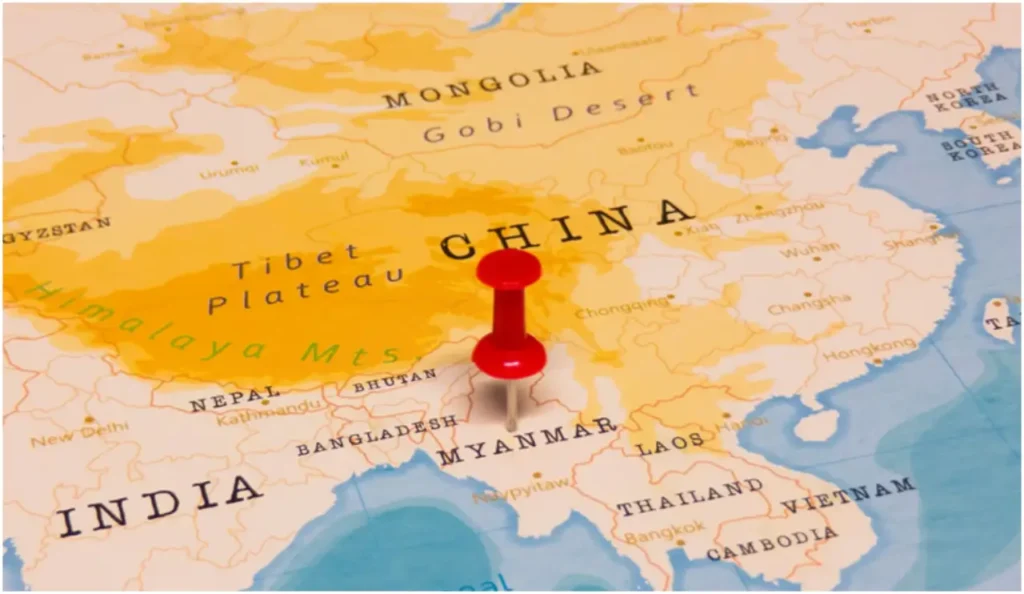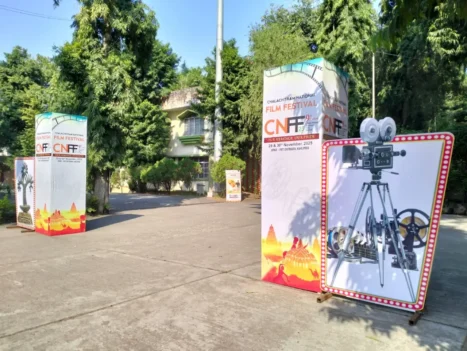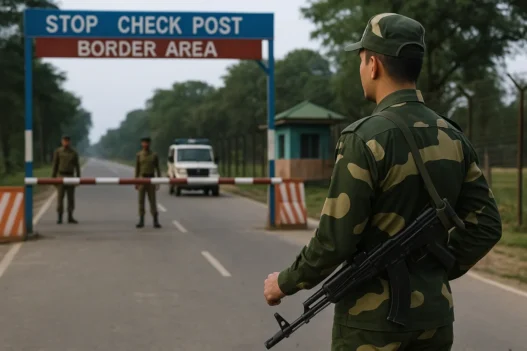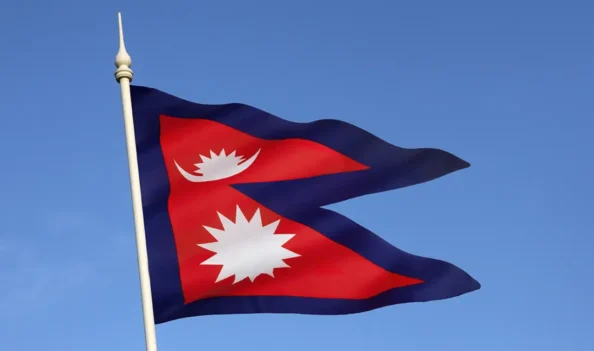In a telling reflection of Beijing’s expanding strategic ambitions, Myanmar’s Rakhine State is quietly being woven into the tapestry of China’s long-term influence strategy—one reminiscent of its calibrated expansion in northern Shan and Mandalay over recent decades. This time, however, it’s not just infrastructure projects or economic corridors laying the groundwork—it’s language, culture, and armed alliances that are shifting the axis. The Arakan Army (AA), now an assertive political and military actor, has taken the lead in popularizing Mandarin among its people, issuing public statements in Chinese alongside Burmese and English. Notably, a statement on March 21, 2025, responding to the Myanmar Armed Forces (MAFs) accusation of narcotics trafficking, was released in Mandarin—symbolizing a bold, cultural overture toward China.
Whether we term it Sinicisation or Sinification, the developments in Rakhine signal something deeper and more structural—a carefully plotted, multifaceted strategy by the People’s Republic of China (PRC) to entrench itself in one of the most strategically valuable regions of Myanmar. Unlike the swift gains made in northern Shan or the Pyin Oo Lwin (Maymyo) region, Rakhine has eluded full Chinese control. That is, until now. Over the past year, the AA has not only welcomed Beijing’s language and cultural overtures but actively aided in their dissemination—an unmistakable indicator of a longer strategic arc in play.
On March 26, 2025, China’s official newspaper, People’s Daily, published a piece spotlighting how the China Cultural Centre in Yangon is promoting Chinese language and cultural immersion among Rakhine’s population. With Chinese infrastructure projects saturating Kyaukphyu and adjoining areas, locals now view Mandarin as a pathway to economic mobility. The article quoted Rakhine local Ko Si Thu, who expressed appreciation for not just the language but for Chinese cultural traditions such as tea-making, calligraphy, and Tai Chi. The Centre’s director, Xiang Jianbo, emphasized the mission to build “mutual understanding” by introducing Chinese arts and values, noting the surge in popularity of Chinese songs among Myanmar’s youth.
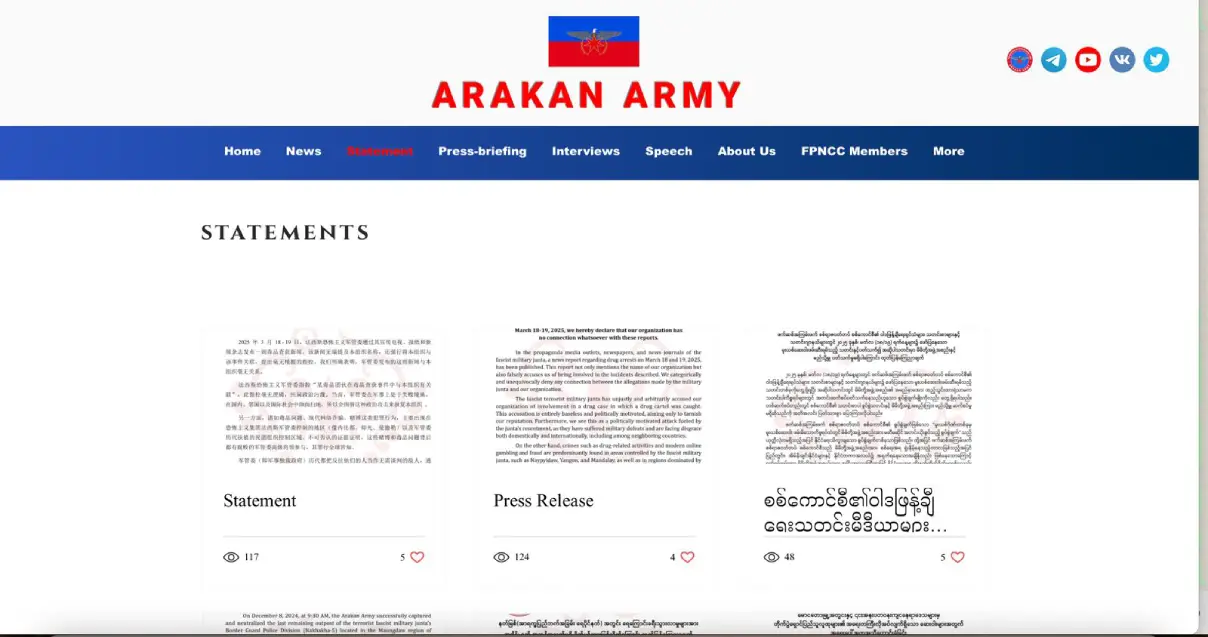
China’s soft power diplomacy—backed by hard power where needed—is working in tandem with its broader geopolitical playbook. Sinicisation, at its core, is not merely a linguistic shift but a reorientation of identity, economy, governance, and allegiance. In Rakhine, this strategy manifests across cultural, economic, and military dimensions, subtly converting the state into a proxy node of Chinese influence.
Economically, the Chinese footprint is unmistakable. China is the largest investor in Rakhine, overseeing eleven major infrastructure projects. These include the China-Myanmar Economic Corridor (CMEC), China-Myanmar Oil and Gas Pipelines, the Kyaukphyu-Ann and Mandalay-Kyaukphyu railways, Ann and Thandwe Wind Power Projects, the Kyaukphyu Deep Sea Port and Special Economic Zone, power plants, and multiple roads connecting Kyaukphyu to Naypyitaw and Mandalay. These are not just roads and pipelines—they are corridors of compliance, ushering in Chinese standards, systems, and dependencies. Remarkably, as of December 2024, the AA had secured control of ten out of these eleven projects—with no reported damage—underscoring the tactical alliance at play.
On the military front, reports from Indian and Bangladeshi outlets (Times of India, New Indian Express, Prothom Alo) as early as 2020 revealed China’s direct military support to the AA, including funding and weaponry. By 2020, 95% of the AA’s funding reportedly originated from Chinese sources, and the group was equipped with around 50 Man-Portable Air Defense Systems (MANPADS), many of Chinese origin. This is part of a broader playbook where China arms ethnic armed organizations (EAOs) while publicly advocating neutrality.
An important chapter in this long game was the formation of the Three Brotherhood Alliance (TBA) in 2019, comprising the AA, the Myanmar National Democratic Alliance Army (MNDAA), and the Ta’ang National Liberation Army (TNLA). The TBA has become China’s strategic conduit for military and logistical support in Myanmar, especially via MNDAA and TNLA, which operate in zones contiguous with China. It has also served as a cover for trans-border criminal activities, including large-scale narcotics trafficking—a claim substantiated by several drug seizures in recent months headed for Rakhine State.
The model China appears to be replicating in Rakhine resembles the Wa Self-Administered Division in Shan State, run by the United Wa State Army (UWSA)—a quasi-state within a state, complete with its own governance, army, currency, and Mandarin as the working language. Should AA capture the remaining three townships—Sittwe, Manaung, and Kyaukphyu—it could establish a similar de facto autonomous region with strategic access to the Bay of Bengal.
That the AA hasn’t yet taken these final three townships isn’t due to military incapacity—it’s geopolitical calculation. Both Kyaukphyu and Sittwe host critical Chinese and Indian investments. The AA is avoiding collateral damage to these high-stakes assets, which also serve as bargaining chips in future diplomatic engagements. AA’s restraint, thus, is not weakness—it is strategic patience.
Even in its present state of partial control, the AA has operationalized a form of governance in the areas it dominates, including law enforcement, local administration, and a maritime security apparatus. On October 12, 2024, the AA released five Bangladeshi nationals who had allegedly entered Arakan waters illegally, asserting that its Coast Guard was safeguarding Arakan’s maritime borders and countering extremist threats along the Naff River. The statement marked a formal assertion of maritime jurisdiction and international diplomacy—traits of a maturing proto-state.
The AA’s diplomatic balancing act is evident in its handling of the proposed humanitarian corridor from Bangladesh. While sympathetic to the humanitarian framing, the AA ensured that China’s sensitivities were not breached. Dhaka, too, played its part by quietly shelving the idea after initial advisory discussions—revealing the complex trilateral negotiation in motion between China, Bangladesh, and the AA.
Interestingly, the AA’s rise coincides with India’s Kaladan Multi-Modal Transit Transport Project (KMMTTP), approved in 2008 and intended to bypass the Siliguri Corridor bottleneck. The AA was formed just a year later, in 2009, in Laiza—a strategic location near the China-Myanmar border and symbolic of Beijing’s shadowy imprimatur. While India’s KMMTTP remains stalled, China’s oil and gas pipelines through AA-controlled zones have been operational since 2013—another signal of India’s strategic lag vis-à-vis Beijing.
The PRC’s diplomatic playbook often lets conflicts evolve to their natural tipping point, intervening only when both sides seek mediation, which invariably benefits Beijing. This tradecraft was evident in Operation 1027 in Northern Shan State (October 2023), when the TBA seized the vital town of Chinshwehaw—home to one of China’s five official trade posts with Myanmar. Analysts contend this could not have occurred without China’s tacit approval, or at the very least, its calculated indifference.
Once AA completes its control over Rakhine, it is likely to wield both Indian and Chinese investments as leverage in wider regional negotiations. The symbolic loss of Rakhine by the MAFs will embolden other EAOs across Myanmar and trigger shifts in the balance of power, especially in Chin State and northern regions. While the MAFs will still retain leverage through banking, electricity, and essential commodities, their grip on Rakhine will be diminished.
Despite these unfolding changes, China is unlikely to obstruct AA’s ambitions. Instead, it will bide its time, offer logistical and infrastructural support, and position itself as a stabilizing force once the new power equilibrium emerges. The AA, meanwhile, will seek to expand its external partnerships with the U.S., Russia, and Bangladesh while preserving its lifeline to Beijing.
MAFs, for their part, are doubling down on securing vital infrastructure, especially naval deployments in the Bay of Bengal. Min Aung Hlaing’s recent trip to Russia (May 2025)—his fifth since the 2021 coup—was an attempt to shore up international backing and essential supplies. He met President Xi Jinping and Kazakhstan’s Tokayev, showcasing his intent to remain diplomatically relevant amid growing internal losses.
The AA, led by a younger, assertive generation, has expanded its operational and political vision, framing its struggle in terms of self-determination, equality, and freedom. Yet, behind these slogans lies the unmistakable shadow of Sinicisation. From language to governance, from education to economic structures—China’s long game is embedding itself into the heart of Arakan. Rakhine is no longer just a border state—it is fast becoming a proxy frontier in China’s regional chessboard.
This article has been reedited and revised to incorporate additional information and recent developments.
Disclaimer: The views and opinions expressed in the story do not represent the stand of this publication.

